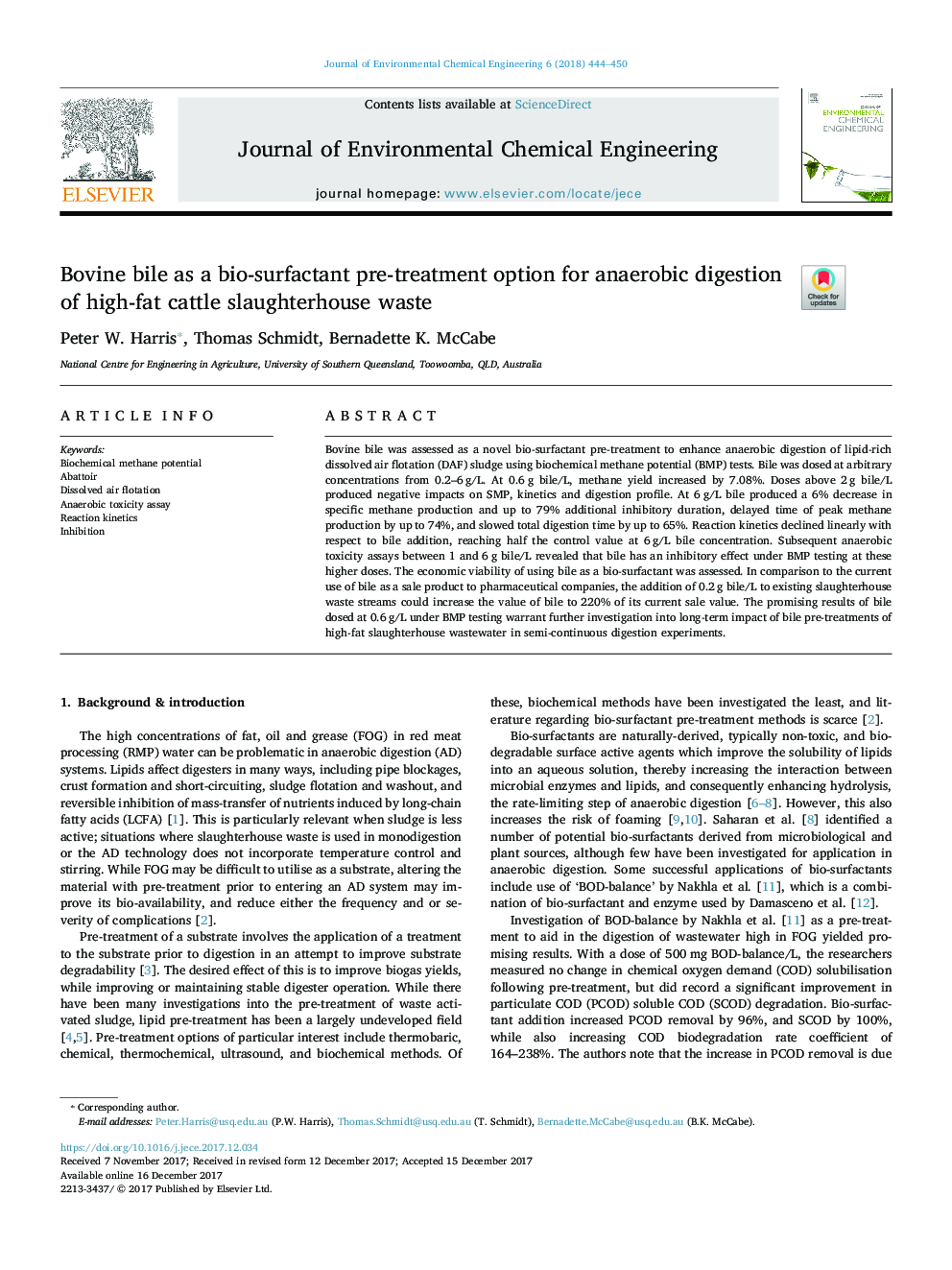| Article ID | Journal | Published Year | Pages | File Type |
|---|---|---|---|---|
| 6664100 | Journal of Environmental Chemical Engineering | 2018 | 7 Pages |
Abstract
Bovine bile was assessed as a novel bio-surfactant pre-treatment to enhance anaerobic digestion of lipid-rich dissolved air flotation (DAF) sludge using biochemical methane potential (BMP) tests. Bile was dosed at arbitrary concentrations from 0.2-6â¯g/L. At 0.6â¯g bile/L, methane yield increased by 7.08%. Doses above 2â¯g bile/L produced negative impacts on SMP, kinetics and digestion profile. At 6â¯g/L bile produced a 6% decrease in specific methane production and up to 79% additional inhibitory duration, delayed time of peak methane production by up to 74%, and slowed total digestion time by up to 65%. Reaction kinetics declined linearly with respect to bile addition, reaching half the control value at 6â¯g/L bile concentration. Subsequent anaerobic toxicity assays between 1 and 6â¯g bile/L revealed that bile has an inhibitory effect under BMP testing at these higher doses. The economic viability of using bile as a bio-surfactant was assessed. In comparison to the current use of bile as a sale product to pharmaceutical companies, the addition of 0.2â¯g bile/L to existing slaughterhouse waste streams could increase the value of bile to 220% of its current sale value. The promising results of bile dosed at 0.6â¯g/L under BMP testing warrant further investigation into long-term impact of bile pre-treatments of high-fat slaughterhouse wastewater in semi-continuous digestion experiments.
Keywords
Related Topics
Physical Sciences and Engineering
Chemical Engineering
Chemical Engineering (General)
Authors
Peter W. Harris, Thomas Schmidt, Bernadette K. McCabe,
